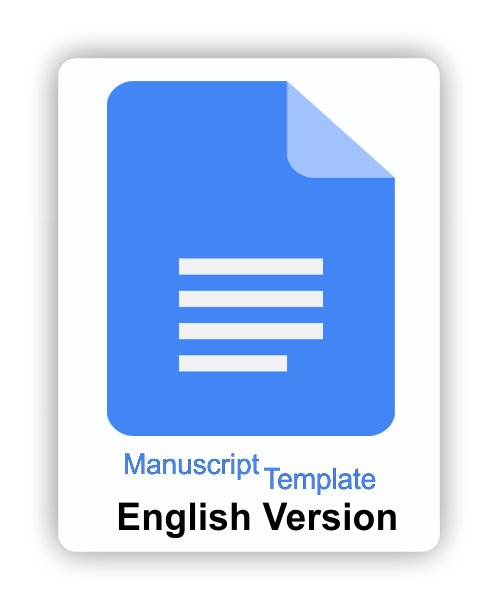Analyzing the relationship between eating habits and nutritional status among vocational high school students
DOI:
https://doi.org/10.21831/jcte.v2i1.572Keywords:
Dietary diversity, dietary pattern, energy adequacy level, nutritional status, spearman correlationAbstract
This study aims to examine: (1) meal frequency; (2) dietary diversity; (3) Energy Adequacy Level (EAL); (4) nutritional status; and (5) the correlation between dietary patterns and nutritional status among students of SMKS Berbudi Yogyakarta. This is a quantitative study using an analytical survey with a cross-sectional design. The correlation test was conducted using Spearman’s Rank. The findings of the study are as follows: (1) the most frequently consumed foods include rice, chicken eggs, tempeh, carrots, bananas, and sweetened condensed milk (SCM), while the least consumed are sweet potatoes, beef, red beans, young jackfruit, rambutan, and cheese; (2) low dietary diversity is found in the categories of staple foods, animal-based and plant-based proteins, fruits, and dairy products, while high frequency is only observed in vegetable consumption; (3) the Energy Adequacy Level (EAL) was found to be low in 29% of students, normal in 56.5%, high in 14.5%, with no students in the very low category; (4) the majority of students (75.8%) had normal nutritional status, while 3.2% were undernourished, 21% were overnourished, and none were severely malnourished or obese; (5) a significant positive correlation was found between dietary patterns and nutritional status, with a p-value of 0.000 (<0.05) and a Spearman correlation coefficient (r) of 0.666, indicating a strong relationship.
Downloads
References
Almatsier, S. (2012). Prinsip Dasar Ilmu Gizi. Jakarta: PT Gramedia Pustaka Utama.
Anggraeni, E. D., Hidayat, S. I., & Amir, I. T. (2021). Persepsi dan Minat Masyarakat terhadap Konsumsi Susu. Journal Social Economics of Agriculture, 10(1), 41-49.
Badan Pangan Nasional. (2020, November 5). Kenyang Tidak Harus Nasi Ini Enam Komoditas Pangan Sumber Karbohidrat Selain Beras. Diakses dari https://badanpangan.go.id/blog/post/kenyang-tidak-harus-nasi-ini-enam-komoditas-pangan-sumber-karbohidrat-selain-beras.
FAO, WHO, & UNU. (2004). Human Energy Requirementes: Report of a Joint FAO/WHO/UNU Expert Consultation: Rome, 17-24 October 2001. Food and Agriculture Organization of The United Nations.
Food and Agriculture Organization (FAO). (2022). Nutrition and Non-Communicable Diseases. Diakses dari https://www.fao.org/nutrition/en/diseases-conditions.
Femyliati, R. & Kurniasari, R. (2022). Pemanfaatan Media Kreatif untuk Edukasi Gizi pada Remaja. Jurnal Kesehatan Masyarakat, 10(1), 16–22.
Kementrian Kesehatan RI. (2014). Peraturan Menteri Kesehatan Republik Indonesia Nomor 41 Tahun 2014, tentang Pedomam Umum Gizi Seimbang.
Kementrian Kesehatan RI. (2019). Peraturan Menteri Kesehatan Nomor 28 Tahun 2019, tentang Angka Kecukupan Gizi yang Dianjurkan untuk Masyarakat Indonesia.
Kementerian Kesehatan RI. (2023). Survei Kesehatan Indonesia Tahun 2023 dalam Angka. Jakarta: Badan Kebijakan Pembangunan Kesehatan.
Putri, A. M. H. (2023, Januari 13). Ironi Negara Maritim: Produksi Ikan Melimpah, Konsumsi Rendah. Diakses dari https://www.cnbcindonesia.com/research/20230113082338-128-
Notoatmodjo, S. (2012). Promosi Kesehatan dan Perilaku Kesehatan. Jakarta: Rineka Cipta.
Rasmaniar dkk. (2023). Kesehatan dan Gizi Remaja. Surakarta: Yayasan Kita Menulis.
Sirajuddin, Surmita, & Astuti, T. (2018). Survey Konsumsi Pangan. Jakarta: Kemenkes RI.
Sufyan, D. L., Sofianita, N. I., Arini, F. A., Fatmawati, I., & Syah, M. N. H. (2020). Buku Ajar Pengukuran Antropometri dalam Daur Kehidupan. Depok: PT Raja Grafindo Persada.
Sugiyono. (2017). Metode Penelitian Kuantitatif, Kualitatif, dan R&D. Bandung: Alfabeta.
Sulistyoningsih, H. (2011). Gizi Untuk Kesehatan Ibu dan Anak. Yogyakarta: Graha Ilmu.
United Nations Children's Fund (UNICEF). (2019). The State of The World's Children 2019: Children, Food and Nutrition. diakses dari https://www.unicef.org/reports/state-of-worlds-children-2019.
United Nations Children's Fund (UNICEF). (2019). Malnutrition. Diakses dari https://www.unicef.org/nutrition/malnutrition.
World Health Organization (WHO). (2014). Health for the World's Adolescents: A Second Chance in the Second Decade. Geneva: WHO.
World Health Organization (WHO). (2019). Healthy Diet. Diakses dari https://www.who.int/news-room/fact-sheets/detail/healthy-diet.
World Health Organization (WHO). (2020). Nutrition. Diakses dari https://www.who.int/health-topics/nutrition.
World Health Organization (WHO). (2021). Obesity and Overweight. Diakses dari https://www.who.int/news-room/fact-sheets/detail/obesity-and-overweight.
World Health Organization (WHO). (2023). Noncommunicable Diseases. Diakses dari https://www.who.int/news-room/fact-sheets/detail/noncommunicable-diseases.
Published
How to Cite
Issue
Section
Citation Check
License
Copyright (c) 2025 Rahma Anissa Putri, Ichda Chayati, Badraningsih Lastariwati

This work is licensed under a Creative Commons Attribution-ShareAlike 4.0 International License.







